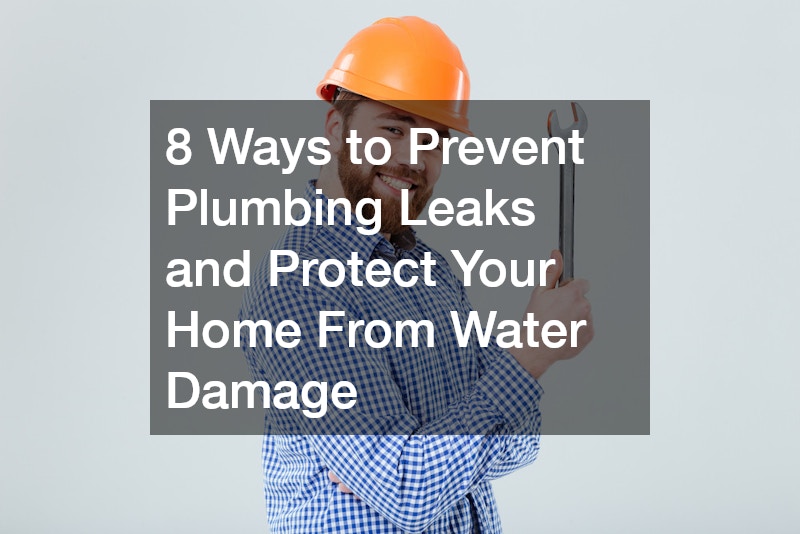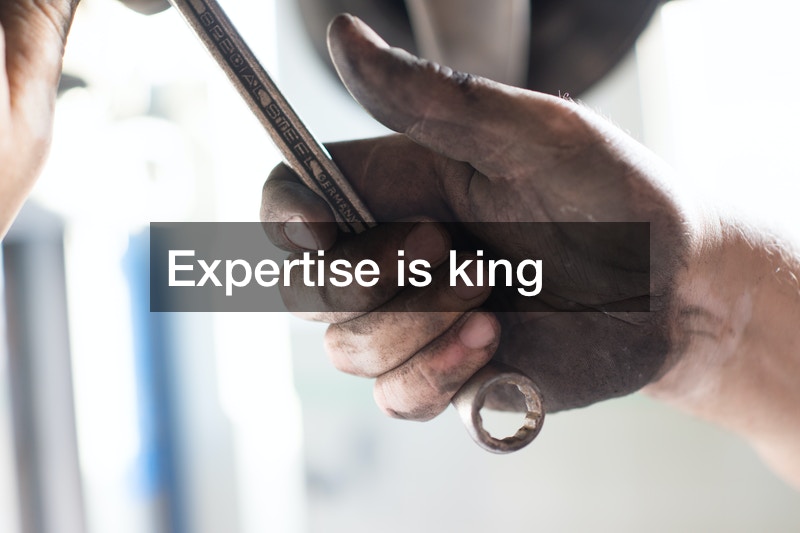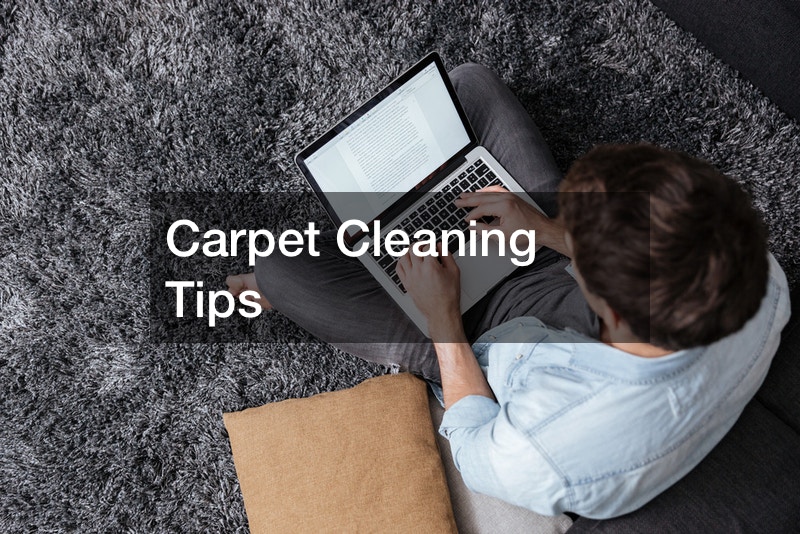
Water damage can be a homeowner’s nightmare, leading to costly repairs and potentially serious issues with the structure of your home. Plumbing leaks are a common source of such damage, but the good news is that many leaks can be prevented with regular maintenance and proactive measures. Here’s a comprehensive guide on how to safeguard your home from plumbing leaks and keep your plumbing system in top shape.
1. Inspect Pipes Regularly

Incorporating regular pipe inspections into your home maintenance routine is essential for preventing costly repairs and water damage. Regular inspections not only help identify problems early but also ensure that your home remains safe and free from the risks associated with plumbing leaks.
Begin by visually inspecting the exposed pipes in your home, focusing on critical areas such as under sinks, in the basement, and in the attic. During your inspection, look for several key signs that could indicate potential problems:
- Corrosion: Check for rust or discoloration on the pipes. Corrosion can weaken pipes over time, making them more prone to leaks.
- Visible Cracks: Examine the pipes for any visible cracks or bulges. Even small cracks can grow and lead to significant leaks and water damage if left untreated.
- Water Stains: Look for water stains on surrounding walls, ceilings, and floors. These stains can signal hidden leaks within your plumbing system.
- Mold and Mildew: Inspect for mold or mildew on surfaces near the pipes. Mold growth often points to moisture issues and hidden leaks.
- Joints and Connections: Pay special attention to joints and connections where pipes meet. These are common areas where leaks can develop.
- Leaks and Drips: Be on the lookout for any drips or leaks from the pipes, especially around fittings and valves.
In addition to these visual cues, ensure there are no other signs of water damage, such as peeling paint or warped wood, which can further indicate hidden leaks. Regular visual inspections should be a part of your home maintenance routine, ideally performed at least once or twice a year.
2. Insulate Pipes
Properly insulating your pipes is essential for preventing plumbing leaks and protecting your plumbing system, especially in colder climates. Here’s how to effectively insulate your pipes:
Prevent Freezing
One of the primary benefits of pipe insulation is its ability to prevent freezing in cold weather. When pipes are exposed to freezing temperatures, the water inside them can freeze and expand, leading to cracks or even burst pipes. By insulating your pipes, you maintain a more consistent water temperature and protect them from the damaging effects of freezing. This is particularly important in areas prone to harsh winters.
Choose the Right Insulation Material
There are several insulation options available to suit different needs. Foam pipe insulation is a popular choice due to its ease of installation and availability. This type of insulation comes in pre-slit foam tubes that you can simply wrap around your pipes. It provides effective thermal insulation and is suitable for most plumbing applications. Another option is heat tape, which can be wrapped around pipes and plugged into an electrical outlet. Heat tape provides additional warmth and is especially useful in extremely cold conditions. Both methods are effective, but the choice may depend on your specific situation and the severity of the cold.
Installation Tips
To ensure proper insulation, make sure to cover all exposed areas of your pipes thoroughly. For foam pipe insulation, ensure that the insulation is tightly wrapped and that there are no gaps. For heat tape, follow the manufacturer’s instructions for wrapping and electrical connections to ensure safety and effectiveness. Insulating pipes not only prevents freezing but also helps maintain water temperature, which can contribute to reducing energy costs.
If you’re unsure about the best insulation method for your needs or need assistance with installation, consulting a professional plumbing service can be beneficial. A plumber can assess your home’s plumbing system, recommend the most effective insulation solutions, and guarantee proper installation to maximize the benefits of pipe insulation.
3. Reinforce Pipes
As pipes age or face increasing pressure, reinforcing them can prevent leaks and ensure long-term reliability. There are several methods to reinforce and strengthen your plumbing system:
Pipe Lining
Pipe lining is a modern technique used to repair and strengthen existing pipes without the need for extensive digging. This process involves inserting a new, protective lining inside the old pipe, which is then cured to form a durable, smooth surface. It effectively addresses issues such as corrosion, cracks, and leaks by creating a new layer that resists future damage. The advantages of pipe lining include minimal disruption to surrounding areas and a significantly extended lifespan for your plumbing system. Professional pipe lining services are essential to ensure that the installation is done correctly and that the new lining adheres properly to the pipe walls, providing a long-lasting solution.
Pipe Relining
Pipe relining is particularly useful for pipes with more severe damage. This method involves placing a new pipe inside the existing one, which helps restore the pipe’s structural integrity and prevent future leaks. The process typically includes cleaning the old pipe, applying a resin, and inserting a new, smaller pipe into the old one. The new pipe then adheres to the old pipe’s interior, effectively forming a new, robust conduit. This technique is less invasive than traditional pipe replacement and is ideal for pipes that are too damaged to repair but where full replacement would be impractical or disruptive.
Pipe Supports and Bracing
Proper pipe supports and bracing are critical for maintaining the stability and longevity of pipes, especially in areas subject to movement or fluctuations in pressure. Adding additional supports or bracing helps to distribute the weight of the pipes evenly and reduces the risk of sagging, misalignment, and subsequent damage. Supports can include hangers, brackets, or clamps, while bracing involves reinforcing pipes with additional structures to prevent unwanted movement.
When to Consider Reinforcement
Reinforcing your pipes is crucial in certain situations. Older pipes often require reinforcement to address the wear and tear accumulated over time. Pipes subjected to high pressure may need additional support to prevent bursts and leaks. Furthermore, pipes showing signs of corrosion or cracking benefit from reinforcement to address existing issues and prevent future deterioration. In many cases, pipeline repairs that involve reinforcement can significantly extend the lifespan of your plumbing system and protect your home from potential water damage.
4. Check for Leaks

Regularly checking for leaks is crucial for preventing water damage and maintaining the efficiency of your plumbing system. Here’s how to effectively detect and address potential leaks:
Inspect for Visible Signs
Begin by examining your home for visible signs of leaks. Look for damp spots, water stains, or discoloration on walls, ceilings, and floors. These indicators can reveal hidden leaks behind surfaces. If you notice any such signs, it’s important to address the issues promptly. Moreover, pay close attention to areas around toilets, sinks, and appliances that use water, such as dishwashers and washing machines. You should also be mindful of signs of a water heater leaking, which can indicate issues with your hot water system. For a thorough inspection and resolution, consider contacting a water heater repair company. Small leaks, if left untreated, can escalate into major problems, causing significant water damage.
Use Your Water Meter
Another effective method for detecting leaks involves using your water meter. Ensure that all water sources in your home are turned off, and take an initial reading of your water meter. Wait several hours without using any water, then check the meter again. If the reading has changed, it suggests there may be a leak in your plumbing system. This technique helps identify leaks that might not be immediately visible, allowing you to catch potential issues early.
Monitor Water Bills
Keeping an eye on your water bills can also help in detecting leaks. Watch for any sudden increases in your bill, which could indicate an undetected leak. Regularly reviewing your bills allows you to spot unusual patterns and address potential issues before they become major problems. Monitoring your water bills is a proactive measure to help avoid extensive damage and additional costs.
5. Maintain Water Pressure
Proper water pressure is crucial for the longevity and functionality of your plumbing system. Both high and low water pressure can cause significant problems if not addressed. Here’s how to manage water pressure effectively:
Monitor Water Pressure Regularly
Keeping an eye on your water pressure is essential for avoiding potential damage. Use a water pressure gauge to measure the pressure of the water entering your home. These gauges are readily available at most hardware stores and are relatively easy to use. Regular monitoring allows you to detect any deviations from the normal pressure range and take action before problems arise.
Address High Water Pressure
High water pressure can put undue stress on your pipes and fixtures, increasing the risk of leaks and burst pipes. If your pressure readings are consistently high, you may need to adjust or replace your water pressure regulator. This device controls the pressure of water flowing into your home and helps prevent damage. High pressure can also lead to issues with pipe fittings, which may wear out more quickly under excessive stress.
Fix Low Water Pressure
Conversely, low water pressure can be a sign of clogs or other issues within your plumbing system. Clogs in your pipes or fixtures can restrict water flow, leading to reduced pressure. If you experience low water pressure, check for potential blockages and clean your fixtures as needed. Persistent low pressure may require more extensive investigation to address underlying issues.
6. Clear Clogs Promptly

Addressing clogs promptly is essential to prevent plumbing leaks and damage. When clogs restrict water flow, pressure can build up, potentially leading to burst pipes. Here’s how to effectively manage and prevent clogs:
Use Manual Tools
When dealing with clogs, start by using manual tools like a plunger or a drain snake. These tools can help dislodge and remove clogs without causing harm to your pipes. A plunger is effective for clearing minor blockages in sinks and toilets, while a drain snake can reach deeper clogs within the pipes. Avoid relying on chemical drain cleaners, as they can be harsh on your plumbing system and may cause further issues.
Prevent Clogs With Proper Disposal
Preventative measures can significantly reduce the likelihood of clogs. In the kitchen, don’t dispose of grease, coffee grounds, and large food scraps down the drain. These substances can accumulate and create stubborn blockages. Furthermore, use drain covers in the bathroom to catch hair, soap scum, and other debris that could contribute to clogs. Regular maintenance and mindful disposal practices help keep your drains clear and functioning properly.
Clean Your Drains
To maintain clear and efficient drains, regular cleaning is essential. Over time, even with careful disposal practices, some buildup can occur. Schedule regular cleaning to remove any residual debris and prevent clogs from forming. Professional drain cleaning services can provide a thorough cleaning of your pipes, ensuring that stubborn clogs are effectively addressed and preventing future blockages.
Maintain Catch Basins
If your property includes catch basins, regular catch basin cleaning services are crucial. Catch basins collect debris and prevent it from entering the drainage system, but they can become clogged over time. Professional cleaning ensures that these basins remain clear and function effectively, preventing backups and contributing to the overall health of your plumbing system.
7. Install a Water Softener
Hard water can lead to various plumbing issues, including leaks, due to the high mineral content it contains. Here’s how installing a water softener can help:
Understand the Impact of Hard Water
Hard water is defined by its high concentrations of minerals such as calcium and magnesium. These minerals can gradually build up in your pipes and appliances, leading to clogs and diminished water flow. Over time, this accumulation can increase pressure within your pipes, which may result in leaks and other damage.
Benefits of a Water Softener
A water softener can address the problems caused by hard water by removing excess minerals from your water supply. This device uses a process called ion exchange to replace calcium and magnesium with sodium or potassium. By reducing the mineral content in your water, a water softener helps prevent build-up in pipes and appliances, which can extend their lifespan and improve overall water system efficiency.
Installation and Maintenance
Installing a water softener involves integrating it into your home’s water supply system. This typically requires professional installation to ensure it functions correctly and efficiently. Once installed, regular maintenance of your water softener is essential. This includes checking the salt levels, cleaning the unit, and ensuring it operates as intended. Proper upkeep ensures that your water softener continues to effectively reduce mineral content and protect your plumbing system.
Long-Term Benefits
Beyond preventing leaks, a water softener enhances the overall performance of your water system. Softer water can improve the efficiency of appliances like dishwashers and water heaters, reducing energy consumption and extending their lifespan. Additionally, it can improve the quality of your water, making it more pleasant for daily use.
8. Schedule Professional Inspections

While regular DIY inspections and maintenance are essential, scheduling professional plumbing inspections is crucial for comprehensive care of your plumbing system. A professional inspection goes beyond basic visual checks, offering a thorough evaluation of your pipes, fixtures, and appliances. Plumbers use advanced tools and techniques to detect problems such as hidden leaks, pipe corrosion, and potential clogs. This depth of inspection can uncover issues that might otherwise go unnoticed until they cause significant damage.
Regular Inspection Schedule
To maintain optimal plumbing health, it’s advisable to schedule a professional inspection at least once a year. This routine check-up helps keep your system functioning properly and addresses any emerging issues before they escalate. Regular inspections also provide opportunities for plumbers to offer valuable maintenance tips and suggestions for system improvements.
Include Sewer Line Checks
When scheduling a professional inspection, it is crucial to include a thorough examination of your sewer lines. These lines play a vital role in directing waste away from your home, and issues with them can lead to significant plumbing problems. Regular sewer line checks are essential for preventing severe issues such as backups and overflows, which can cause extensive damage and costly repairs.
A well-maintained sewer clean out facilitates the inspection process by providing plumbers with easy access to the sewer lines. This accessibility allows them to identify any potential blockages, leaks, or signs of deterioration more efficiently. By ensuring your sewer lines are inspected and maintained regularly, you can address minor problems before they escalate, safeguarding the long-term health of your plumbing system.
Investing in regular professional inspections not only helps you catch issues early but also saves you money in the long run by preventing major repairs and minimizing the risk of water damage.
Key Takeaways
Preventing plumbing leaks and safeguarding your home from water damage involves a blend of routine maintenance, proactive strategies, and expert help. By regularly inspecting your pipes, insulating them, reinforcing them as needed, monitoring for leaks, maintaining optimal water pressure, clearing clogs promptly, installing a water softener, and scheduling professional inspections, you can protect your home from potential water damage and enhance the longevity of your plumbing system. Implementing these measures will help you avoid costly repairs and ensure a safe, efficient plumbing system in your home.



